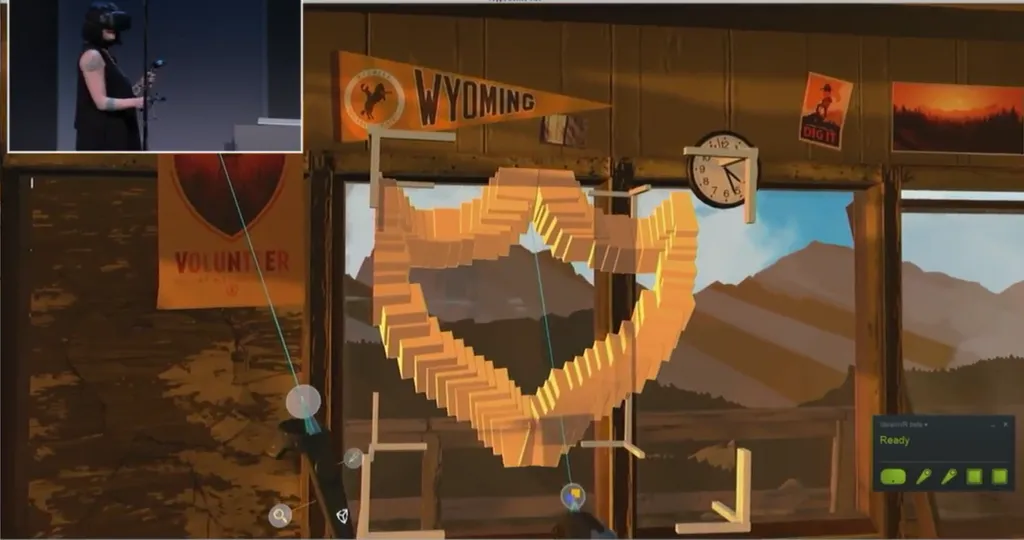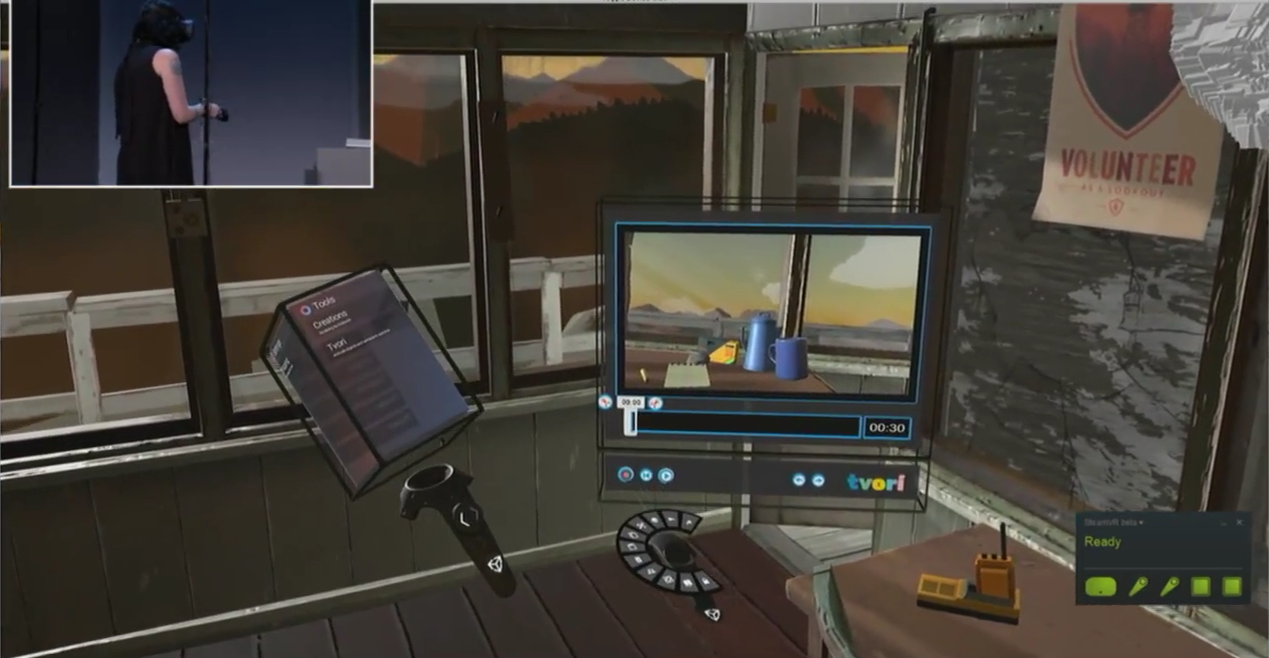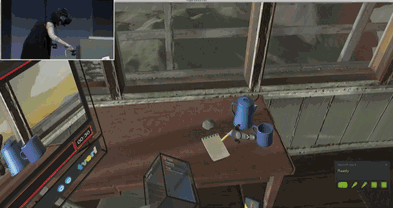Earlier this week Unity’s Editor VR platform evolved from a novel new way of making videogames into potentially the most forward-thinking VR development platform, and it is all to do with Tools.
Toward the end of their on-stage demo at Unite 2016 on Tuesday, Unity Labs’ Amir Ebrahimi and Timoni West debuted this addition to the platform, which is due to release before the end of the year. Tools brings third-party creative software into VR so that you can use it to make objects, images and interactive elements and bring them into your games and experiences. As an example, VR scene-building app Tvori, one of our favorite pieces of VR creation software, was shown running inside Editor VR.
But Tvori could be just the start.
Imagine what you could do with Google’s Tilt Brush and Oculus’ Medium and Quill at your fingertips, not just as art makers in enclosed environments but as asset builders for games. You could make game worlds and objects not through hours of coding or even Unity’s own store full of options, but by simply drawing or sculpting them in VR. According to VP of Unity Labs Sylvio Drouin, that’s a very real possibility.
“We’re all talking to them [apps like Tilt Brush, Medium and Quill] to bring them into Editor VR because you see if I bring those tools into Editor VR, what does it give them? Interactivity.”
By that, Drouin means Unity as a software creation toolset is all about empowering developers to build interactive content that reacts to your presence — and that is essentially the missing piece of the first VR art apps that create more static works. Drouin explained that by making Editor VR “extensible”, virtually any developer would be able to create their own additions to the platform.
“We feel VR is early enough that we can say that nobody has the right answers yet,” he explained. “So we don’t want to pretend that ‘Oh, we’ll give you a scene-editing tool in VR and this is the way it’s going to work and this is the final build.’ No.”
Instead, Unity wants to create a community around adding Tools to Editor VR; different people coming up with different solutions for different needs. Someone will make the tool you want to use and, when they do, it will be right there in VR.
This wasn’t what the company originally had in mind for Editor VR, though. Drouin stated that Unity Labs “spoke to dozens and dozens of VR developers and the main pain point was that they had to put the headset on, test, remove the headset, change something, put the headset back, change. That was so painful so we started there.”
Labs began to experiment with interface ideas in VR, and came back with a mixed bag of results: some problems answered, some only temporarily so, and some issues still persisting.
“In the end, that’s when we realized all of this is going to change massively in the next years,” Drouin said. “If you look at the VR numbers, we are in the infancy. So by making it open, we created this platform to become an ecosystem of VR creation components, VR authoring components.”
Unity will seek to foster this ecosystem too; Tvori could become available in the asset store and Unity could help promote it, which would give a big boost to an app that was lost among all the games on the Steam store.
In its Unite keynote, Unity made the bold claim that it wants every VR developer to be making their content with Unity, and Editor VR with Tools forms a big piece of that push. Drouin thinks it will give them a leg up over the competition: Unreal Engine 4’s own in-VR editor.
“They don’t have any idea if people will want to use it,” he said. “So our approach is to say ‘We don’t know what people want so let’s just open it so they can find out.'”
It could also mean studios working on non-VR content opt to use the new medium of virtual reality to build their content for traditional 2D screens too. Drouin is confident that will happen, though wouldn’t speculate on the percentage of developers that might do so.
Editor VR is scheduled to launch later this year and Tools will be included, though there’s still a lot of work to be done. In terms of demand on PCs, Drouin says that anyone that wants to use the in-VR toolset to do a lot should have “the best machine” with a GTX 1080 card. He also dreams of one day bringing it to mobile platforms, but joked that right now on Daydream you’d be editing a scene with three objects.
“We’ve just opened the door to a gigantic world of possibilities,” Drouin said.
Now it’s just up to developers to step inside.

































